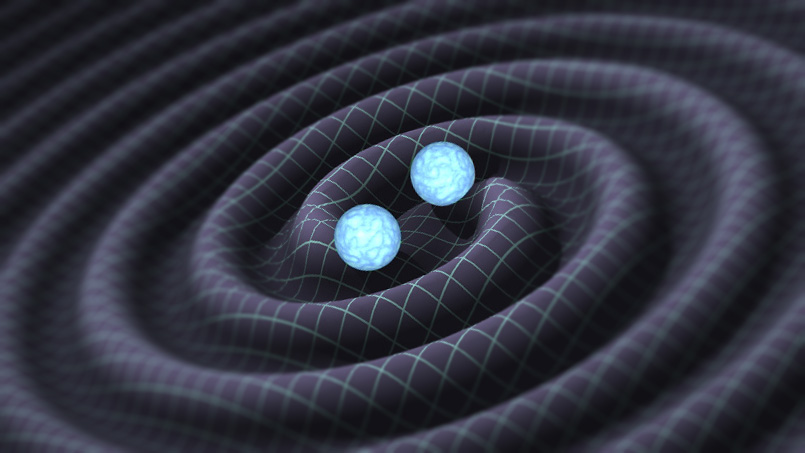27 Feb Gravitational Waves Explained
The recent detection of gravitational waves at LIGO (Laser Interferometer Gravitational-Wave Observatory) has captured the imagination of the public. It will stand as one of the great feats of experimental physics, alongside the famous Michelson-Morley experiment of 1887 which it resembles. In fact by comparing these two experiments, you will see that understanding gravitational waves is not as hard as you think.
Contraction. Michaelson and Morley measured the speed of light at different times as the earth moved around its orbit. To their – and everyone’s – surprise, the speed turned out to be constant, independent of the earth’s motion. This discovery caused great consternation until George FitzGerald and Hendrick Lorentz came up with the only possible explanation: objects in motion contract. Einstein then showed that this contraction is a consequence of his Principles of Relativity, but without saying why they contract (other than a desire to conform to his Principles). In fact Lorentz had already provided a partial explanation by showing that motion affects the way the electromagnetic field interacts with charges, causing objects to contract. However it wasn’t until Quantum Field Theory came along that a full explanation was found. In QFT, at least in Julian Schwinger’s version, everything is made of fields, even space itself, and motion affects the way all fields interact.
Waves. Electromagnetic waves, e.g., radio waves, have long been known and accepted as a natural phenomenon of fields. Now in QFT gravity is a field and, just as an oscillating electron in an antenna sends out radio waves, so a large mass moving back and forth will send out gravitational waves. But it didn’t take QFT to show this. Einstein also believed that gravity is a field that obeys his equations, just as the EM field obeys the equations of James Maxwell. In fact gravitational waves have been accepted by many physicists, from Einstein on down, who see gravity as a field.
Curvature. But what about “curvature of space-time”, which many people today say is what causes gravity? You may be surprised to learn that’s not how Einstein saw it. He believed that the gravitational field causes things, even space itself, to contract, analogous to the way motion causes contraction. In fact Einstein used this analogy to show the similarity between motion-induced and gravity-induced contraction: they both affect the way fields interact. It is this gravity-induced contraction that is sometimes called “curvature”.
Evidence. The first detection of gravitational waves was done at LIGO, using an apparatus similar to Michelson’s and Morley’s. In both experiments the time for light to travel along two perpendicular paths was compared, but because the gravitational field is much weaker than the EM field, the distances in the LIGO apparatus are much greater (miles instead of inches). Another difference is that while Michelson, not knowing about motion-induced contraction, expected to see a change (and found none), the LIGO staff used the known gravity-induced contraction to see a change when a gravitational wave passed through.


Sorry, the comment form is closed at this time.